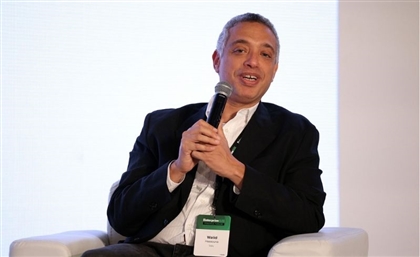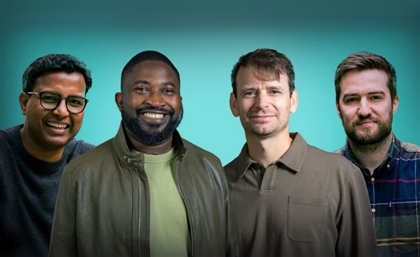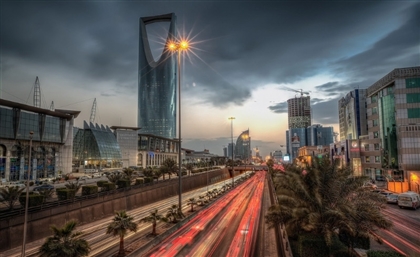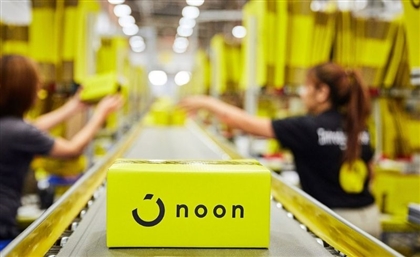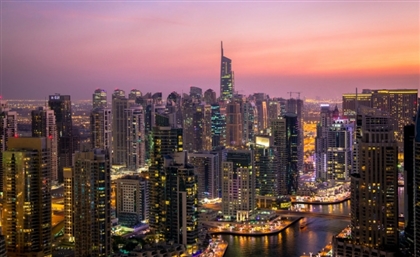From London to Art D’ Egypte: This British Startup Is Helping Egypt’s Local Artists Go Global
We sit down with Smartify’s co-founder Anna Lowe, who’s working with Art D’Egypte to connect Egypt’s emerging contemporary artists with the fast-growing world.
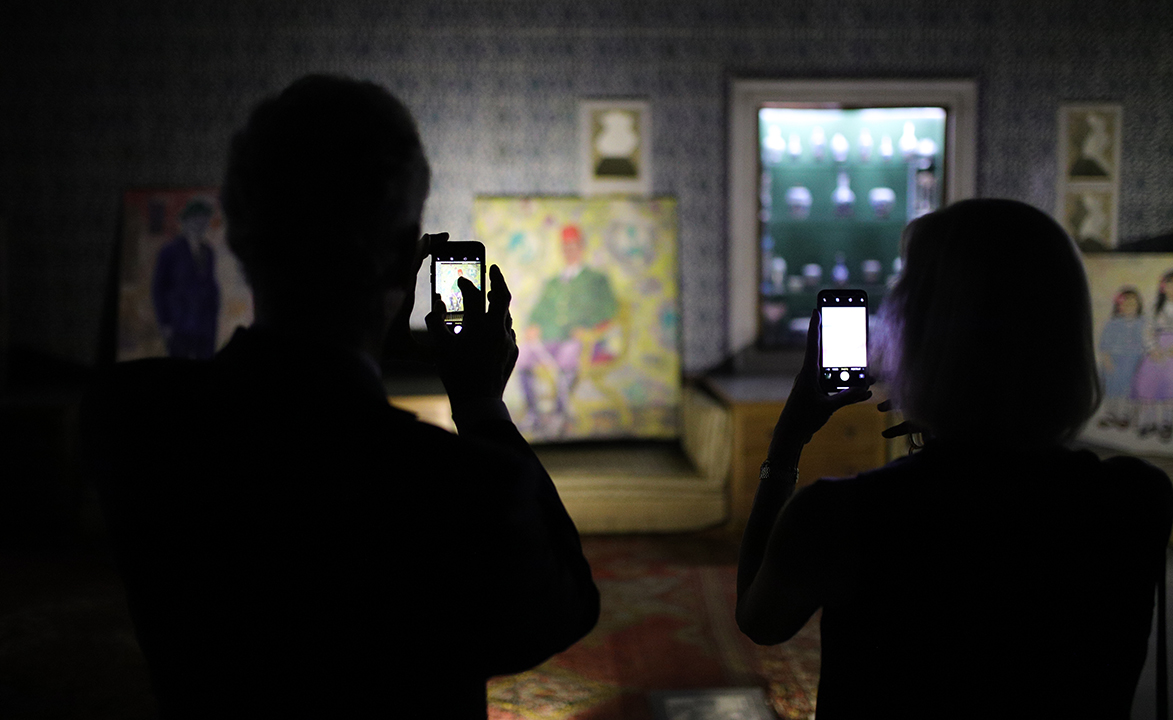
Sitting just steps away for the Nile, the Egyptian Museum was established in 1902 to be the world’s largest collection of Pharaonic antiquities. Fast forward to October 2018, British entrepreneur, Anna Lowe, is in a suite at the Nile Ritz Carlton, overlooking the majestic maroon landmark. Lowe, who has both academic background and professional experience in museums, is the co-founder of Smartify; a social enterprise powered by artificial intelligence to recognise captured paintings, artifacts and statues, in order to provide museum and gallery-goers with the stories behind them. In the thumping heart of Cairo, Lowe is partnering with Art D'Egypte, an annual world-class art exhibition, to tell the story of local contemporary artists to a wider range of audience.
This is not the first time for Lowe in Egypt. The British entrepreneur was in Cairo for Rise Up Summit in December 2017 where she spoke about creating art-tech startups. “There’s an understanding here that art and creativity is something and business is another thing,” she says. “The whole point was to demonstrate that one can actually create really big businesses out of different creative industries.”
Two months before Rise Up, Art D’Egypte took place in the Egyptian Museum. On March 2018, the Egyptian Cultural Bureau in London held an exhibition under the title “Eternal Light” showcasing some of the art exhibited in Art D’Egypte 2017. During “Eternal Light,” Smartify made an introduction that impressed the Egyptian exhibitors and organisers. Lowe was also working with the British Council in Cairo, so they automatically connected both parties. “This is something special, both in terms of raising awareness of contemporary art and the market here in Egypt,” she reflects. “It’s really hard for emerging artists to get exposure in an international market but also in terms of raising awareness in the support that historical landmarks need and putting new objects in them raises awareness, support, and funding.” Art D’Egypte’s second edition just launched last week in Manial Palace this time, and is open to the public until November 27th.

Lowe worked as the Marketing and Events Officer at Museo Nacional de Bellas Artes in Buenos Aires, Argentina for a little of a year. While her co-founder, from Greece, Thanos Kokkiniotis had a background in mobile apps particularly developing payments apps for large companies. Smartify was inspired by a common concern they encountered while visiting museums, always unsatisfied with the amount of data provided about each artefact; always craving to know more.
“We work really closely with the museums and the partners,” Lowe tells Startup Scene. While the founders described Smartify as Shazam for art when they first started, Lowe tells us that it has become more of a Spotify playlist for art and antiquities.
“You can save your favourites into a collection, then follow other people and find out what other people like and share.” Smartify’s service could be resembled to what Google does, but the app also integrates with museums for curated content to produce multilingual audio guides, digitised ticketing, and donations. So, it’s like a guide to show museum-goers around.
Moreover, the founders also wanted to support museums to be more financially sustainable. “We believe they could offer their services through the app to kind of connect with their audience to have a more resilient business model.”

To Smartify, Art D’Egypte will act like a gateway for expansion to the Middle East.
Smartify is a B-to-B-to-C business model, so their main customer is the audience visiting the museum. “Now we’re working with 80 museums globally, so you can use it in the Louvre, the Smithsonian, and we continue to increase our database and improve our algorithms.” To get the best information to connect with audio content, everything is checked by the museums – the second type of customers.
“Museums sign up to Smartify because they see the benefit of being on the platform rather than having to develop their own apps; they’re very expensive and museums have to keep up with the latest technology. So, by being on the platform, they know that Smartify is looking after that for them,” Lowe elaborates.
To Smartify, Art D’Egypte will act like a gateway for expansion to the Middle East. “We’re also working behind the scenes with a collection in Beirut; a private art foundation that is opening in a museum next year,” the co-founder says. “We’ll be launching at a few more places in the region at the end of this year and the beginning of next year.” Smartify's app will help local artists in exhibitions such as Art D'Egypte get global exposure by storing data about their art. That way, whenever a visitor is around a particular painting or artifact exhibited anywhere else, they'll be able to know more about the artist and the story behind their art by scanning it via the mobile app.
In terms of being a supportive platform for artists, the charm about using image recognition and AI is that the art will always be linked. “We keep the art copyright-protected so no one can download the image or put it in their own phone,” says Lowe. “When you scan something at a museum, you can link through to donate to the museum. In the same way, we want to work more with artists to be able to link through to personal collections and hopefully help them sell and get more exposure.”

“It’s really hard for emerging artists to get exposure in an international market but also in terms of raising awareness in the support that historical landmarks need and putting new objects in them raises awareness, support, and funding.”
The museums Smartify works with pay for the traditional IT services, but what they’re exploring now is continuing to do more of a traditional audio guide where the visitor or the tourist at the museum purchases an audio. “The majority of that will go to the museum; helping the museums with that initial outlay,” explains Lowe. “So, it’s a revenue-shared model rather than a software.”
The founders want to keep advertising out of the app, and if Smartify would use commercial tech tools later on, it would be targeting and relating to art. For example, if one arrives in London, the app would want to show them to the exhibition that’s opening nearby. “On Facebook, it’s very hard to get exposure, there’s so much competing, there’s so much noise. In a platform that’s dedicated to just art, tourism and cultural experiences, you can find things you’re interested in a lot more.”
At the moment Smartify is fundraising. “We’re scaling up the team and growing internationally,” Lowe says. Currently based in London and Amsterdam, Smartify is gearing up to open offices in France and the U.S. as well. “We’re going to continue growing our platform in terms of content from museums, and the following part would be offering our users a lot more content,” she says. “Especially in places where there is limited access to information.”
Photography: Some artwork from the second edition of Art D'Egypte.
Courtesy of #MO4Productions.
Photographer: Moahab Mohamed
Trending This Month
-
Dec 28, 2025



